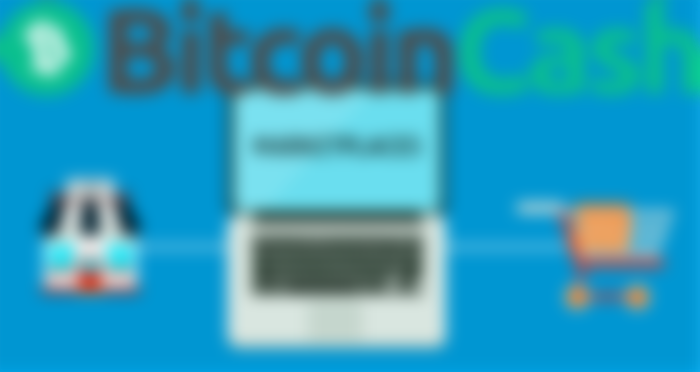This article is the third part of proposals for the massive adoption of the BCH. In this third and last part, I will address the development of a marketplace that can favor sales to retailers and consumers who accept BCH.
Introduction
The pandemic showed us that retail commerce had to adapt to online commerce, and consequently home delivery. Many companies that didn't evolve went bankrupt, and therefore, a large part of the companies that are in the market today are survivors, who had to evolve into this type of online commerce. All this infrastructure will not disappear when the pandemic passes, so BCH can favor many companies, as it is a means of digital payments, as well as reducing transaction costs in online sales, so a marketplace could easily be built, which would unite sellers and buyers who accept BCH, although existing marketplaces and other online media can also be used.

Anyone who has read the second part knows that I am very optimistic about credit sales, and I consider that tokens can also be useful in this context, but I will not address all the complex potential with the interaction of this resource. Limiting me to just approaching the marketplace, but obviously feel free to imagine the union and interaction of this and other resources, so I'm not the only dreamer around here.
The Marketplace
Most of us are aware of the success of NFT tokens and the Juungle platform, which in a short time have managed to simply and efficiently bring together sellers and buyers of these non-fungible digital assets. There is also the platform MapBitcoin and AcceptBitcoinCash which show the places that accept BCH. So what would stop you from joining search and sales platforms and creating a marketplace that runs on BCH? As well as hunting discounts in stores with something analogous to GeoDrop.
Realize that the technologies already exist and work, being open source, it would be enough to join these platforms in a new platform that would promote an online Marketplace, which would unite buyers of products and services, and sellers of these products and services, who accept and use BCH.
Popular marketplaces like; Amazon, Alibaba, MercadoLibre or eBay have a huge challenge in brokering purchases and sales, as well as ensuring that there are no products that are not delivered and purchases that are not paid for. And to coordinate this mechanism there are financial and transaction costs. With BitcoinChash it is possible to reduce these costs by making this marketplace more competitive than its likely competitors in the current market.
When Satoshi developed BCH he thought, among other things, about how to minimize the risks of online shopping by preventing the opportunistic shopper from requesting a false chargeback after receiving the product. This is a very serious problem, as in addition to generating financial costs with insurance companies, this insecurity also generates transaction costs. Once a cryptocurrency is sent, it is impossible to request a chargeback, as there is no third person in the game, so cryptocurrencies are the solution to this serious problem.
Satoshi certainly believed that the game was unequal for the seller, who had more to lose than the buyer, and with his solution we have an advantage over other payment systems and, consequently, the Marketplace, but in a marketplace many sellers are beginners, and they haven't achieved a reputation in the market yet, and some want some privacy. To solve this problem a multisig wallet between buyer and seller can be used.
Its Functioning
Let's imagine a Markeplace that only has sellers and buyers who accept BCH, and let's also imagine that they don't need to identify themselves, just being known by their wallet address, or maybe an abbreviation link like my tipb.ch/adeilton using just one nickname or brand. In such Markeplace, reputation is acquired through an SLP token equivalent to the percentage of a successful purchase or sale, so whoever has more tokens has greater reputation and offers greater security. This token would also serve to fund the Marketplace. Also to ensure that there is no fraud between the seller and the buyer.
With a multisig wallet available amicably on the Marketplace platform. The buyer will send the bitcoins or tokens to an address that will be shared with the seller. The address is multisig 2/2, so it needs two signatures, one from each party, to carry out the transaction.
The protocol and design of the game
The rules of the game would be like this; Buyer sends the bitcoins to the payment address, so the seller needs to send the product to receive the payment, after the buyer receives the product at his house and checks it, making sure that the product is as requested, he must go to the marketplace and sign the transaction so that the seller receives payment, by doing so, they receive a platform token as loyalty points.
If the product is not received on time by the customer or the product does not comply with what was requested by the buyer, he must signal this to Merketplace, which will open a time count for the seller to manifest itself, or send the correct product. If the seller solves the problem, the countdown timer stops counting and the customer can signal that payment can be made, however, if the seller does not speak up within the time limit, he will lose all loyalty points and his address will be blacklisted on the marketplace, and if the seller still does not express himself, the amount paid will remain at the address forever.
The Marketplace will charge the seller a fee, which is suggestively a percentage of the value of the item that is actually sold. Part of the Marketplace earnings would be turned into tokens that would be offered to buyers and sellers as incentives for both to use the platform.Se houver divergência na sinalização entre comprador e vendedor, a solução será para 0 tokens.

The unique Nash equilibrium in pure strategies
The design of this mechanism satisfies the unique Nash equilibrium, as shown in this example:
Colin is a seller, and Rose is a buyer, and they both make a deal to buy and sell a $10.00 blouse. So we have the following situations in a payoff matrix:
First situation (Up, Left)
Colin delivers the product as advertised, and Rose signals the receipt on the website, then the wallet receives Rose's signature, so Colin can sign the wallet to receive his $10.00 in BCH, and as both used the platform correctly, and without any contradiction , will receive a token as a loyalty and reputation point worth 10% or $1.00. But $10.00 represents Colin's revenue and not his profit, let's assume the merchandise costs are $5.00 so Colin's profit is $5.00 + $1.00 (loyalty token), so Colin's Payoff is $6.00 . Rose's Payoff is $10.00 (Blose Value) + $1.00 (Loyalty Token) = $11.00
Second situation (Up, Right)
Colin does not deliver the product as advertised, and Rose uses the platform to signal that the product has not been delivered, the site opens the countdown timer, time expires, and Colin does not respond. So Collin loses his profit of $6.00 which corresponds to a payoff of -6, and Rose loses his $10.00 but for having used the platform correctly he receives the token worth $1.00 so his payoff is -9
Third situation (Down, Left)
Colin delivers the product as advertised, and Rose does not signal receipt on the website, as if she does, it would disagree with the seller's signaling, and would lose the token in the same way, Colin is left with a loss of $6.00 with -6 being his payoff, and Rose loses $1.00 but keeps the $10.00 blouse which is her payoff.
Fourth situation (Down, Right)
Colin does not deliver the product and lies by signaling that he made the delivery, and Rose does not signal receipt on the site, so Colin is left with an opportunity cost of $6.00 with -6 being his payoff. Rose is left without the money and the product, totaling a payoff of -10, considering an indifference to the token and the business.

Thus, the optimal solution among the four situations is the first situation (upwards, to the left), as shown in the figure above, which represents the unique Nash equilibrium in pure strategies.
Conclusion
This article presented the advantages of a Marketplace to foster greater adoption of BCH in internet sales worldwide, taking advantage of the increased adoption of online commerce by physical stores, due to the pandemic.
The article also showed that a marketplace using exclusively BCH would have advantages for its users (buyers and sellers) by offering more security and privacy in commerce.We can see that Satoshi Nakamoto's creation allows us to securely transact goods and services on the internet, when well designed, using simple contracts such as a multsig address.
I hope you enjoyed this text, and also see the first and second parts if you haven't read it yet.
Noise
BCH - Brazil
Facebook: https://www.facebook.com/groups/504437216905955
Telegram: https://t.me/bchbrasil
I hope you liked the text. Be sure to comment what you think. This text may have several grammatical flaws, since English is not my native language. I would be grateful for any corrections, grammatical or methodological.
Peace be on you.



Traditionally for marketplaces a 2-of-3 multisig where the parties are the buyer, the seller and a mediator escrow service is proposed. If everything goes well, both buyer and seller can sign the transaction and the mediator would never need to be involved, incurring no additional costs.
I think this proposal could fit nicely on top of that, for additional security: it incentivizes honest behavior between buyer and seller but has a fallback third-party mediator for disputes. The mediator would rely even more heavily on reputation, so they would be incentivized to do a fair job.